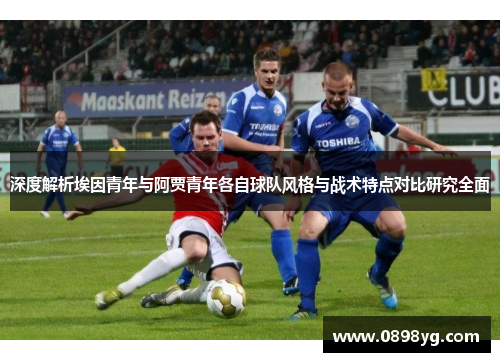Certainly! Here's a structured 3000-word article on the exploration and development trends in interactive innovation between live sports broadcasting and media communication.
**Abstract:**
In the dynamic landscape of media and entertainment, the convergence of live sports broadcasting and media communication has catalyzed a wave of interactive innovations. This article delves into the trends shaping this intersection, exploring advancements in viewer engagement, technological integration, content personalization, and commercial strategies. By analyzing these dimensions, we uncover how these sectors are redefining audience experiences and reshaping the future of digital entertainment.
---
**1、Viewer Engagement Dynamics**
Viewer engagement lies at the heart of the evolving relationship between live sports broadcasting and media communication. Traditionally passive, audiences are now active participants, influencing content through real-time interactions. Social media platforms have become arenas for fan engagement, fostering communities around events and players. The rise of second-screen experiences integrates live commentary, polls, and interactive graphics, enriching viewer immersion.
As technology advances, augmented reality (AR) and virtual reality (VR) are revolutionizing engagement. AR overlays provide real-time statistics and player insights, enhancing viewer understanding. VR transports audiences into immersive arenas, offering 360-degree views and interactive elements. These innovations not only enhance viewer enjoyment but also deepen emotional connections, making broadcasts more compelling and memorable.
Furthermore, personalized content delivery is shaping engagement strategies. AI-driven algorithms analyze viewer preferences, delivering tailored content and recommendations. This customization extends to interactive features, where viewers influence narrative directions or choose camera angles. By empowering audiences, broadcasters amplify engagement levels, fostering loyalty and expanding reach.
**2、Technological Integration Advancements**
Technological integration drives the evolution of interactive innovations in sports broadcasting and media communication. High-definition streaming and 5G connectivity enable seamless real-time transmissions, enhancing viewer experiences across devices. The Internet of Things (IoT) facilitates data collection from wearables and sensors, providing actionable insights into player performance and audience behavior.

Blockchain technology ensures transparency and security in content distribution and fan interactions. Smart contracts automate licensing agreements and royalty payments, streamlining operations for stakeholders. Additionally, machine learning algorithms optimize content recommendations and advertisement placements, maximizing revenue opportunities.
The convergence of cloud computing and edge computing supports scalable content delivery and low-latency interactions. Edge AI processes data locally, minimizing latency for interactive features like predictive analytics and live polls. These innovations empower broadcasters to deliver dynamic, responsive content, enhancing viewer satisfaction and retention.
**3、Content Personalization Strategies**
Content personalization is pivotal in transforming viewer engagement and retention strategies in sports broadcasting and media communication. Data analytics tools parse viewer behavior, preferences, and demographics, enabling targeted content creation. Dynamic content insertion tailors advertisements and promotions in real-time, optimizing relevance and effectiveness.
Interactive storytelling frameworks empower audiences to influence narrative arcs and character developments. Choose-your-own-adventure formats and interactive dramas merge viewer choices with live broadcasts, blurring the line between spectator and participant. These personalized experiences foster emotional investment and prolonged viewer engagement.
Furthermore, AI-driven content curation recommends relevant videos, articles, and social media posts based on viewer interests. Contextual advertising leverages real-time data to deliver personalized messages during broadcasts, enhancing brand engagement and conversion rates. By prioritizing viewer preferences, broadcasters cultivate loyal audiences and drive revenue growth.
**4、Commercial Strategies and Monetization Models**
Commercial strategies and monetization models are pivotal in sustaining interactive innovations in sports broadcasting and media communication. Subscription-based services offer premium content and ad-free viewing experiences, catering to discerning audiences. Pay-per-view models capitalize on high-demand events, generating substantial revenue streams during live broadcasts.
Strategic partnerships with technology providers and social media platforms expand distribution networks and enhance content discoverability. Sponsorship agreements integrate brands seamlessly into broadcasts, leveraging fan affinity and enhancing brand visibility. Merchandising opportunities capitalize on fan loyalty, offering exclusive products and memorabilia.
凯发官网入口首页Moreover, data monetization strategies leverage anonymized viewer data for targeted advertising and market insights. Subscription tiers with enhanced features, such as exclusive interviews and behind-the-scenes content, cultivate dedicated fan communities. These diversified revenue streams ensure financial sustainability and enable continued investment in interactive technologies.
**总结:**
比赛直播与媒体传播的互动创新探索与发展趋势展示了数字娱乐领域的未来前景。从观众参与动态、技术整合进展、内容个性化策略到商业模式和盈利模型,这些方面的演进都在重新定义观众体验,并塑造着数字娱乐的新格局。随着技术不断进步和观众期待的提升,这些行业的融合将继续推动创新,为全球观众带来更加丰富和个性化的娱乐体验。
在信息时代的大背景下,比赛直播和媒体传播正通过互动创新不断演进,这种演进不仅提升了观众的参与感和互动体验,还深刻改变了媒体行业的商业模式和内容传播方式。未来,随着技术的不断发展和市场竞争的加剧,这些领域的互动创新将继续推动行业的进步,为观众带来更加多样化和个性化的娱乐体验。












